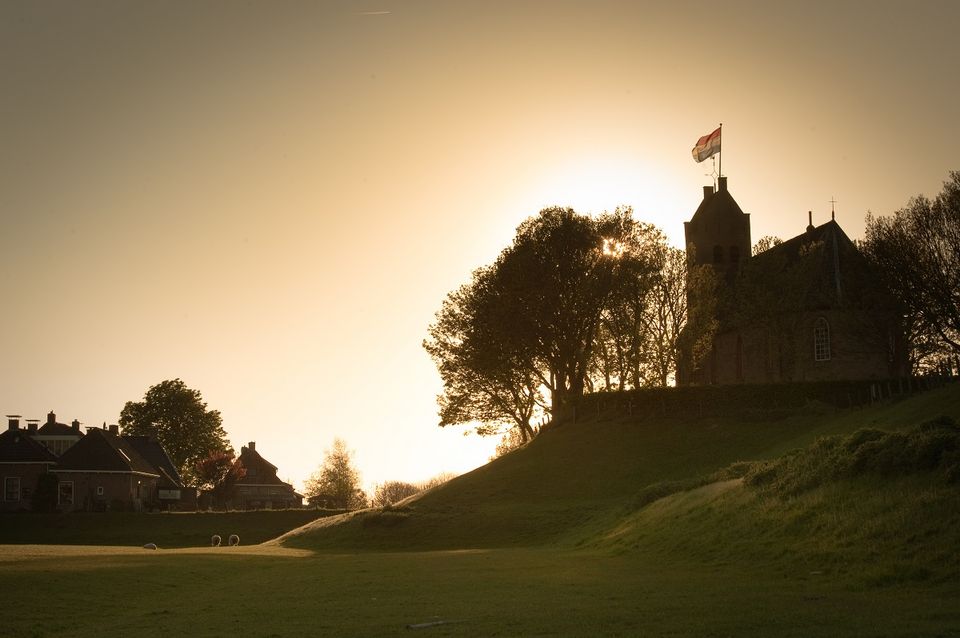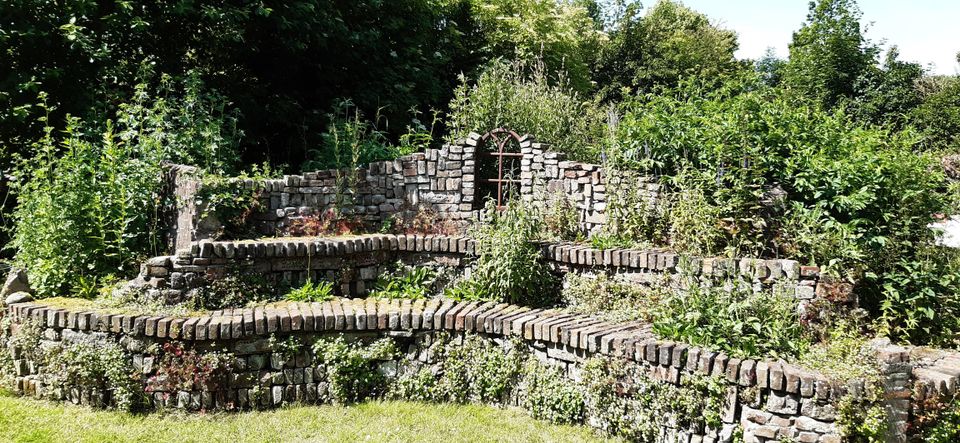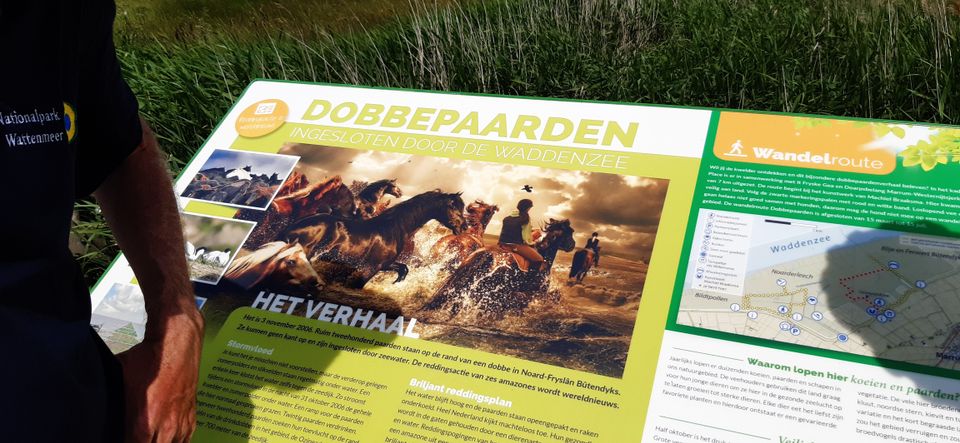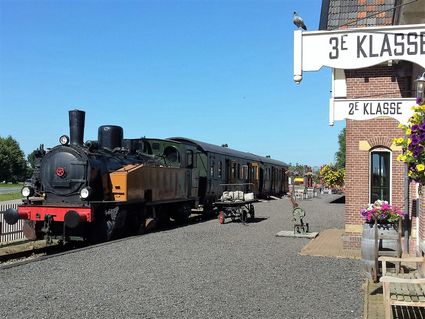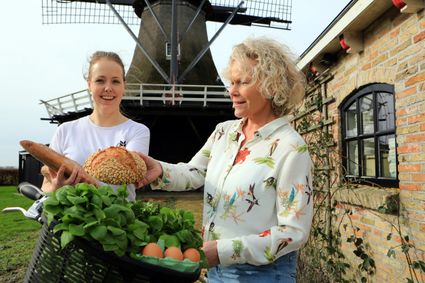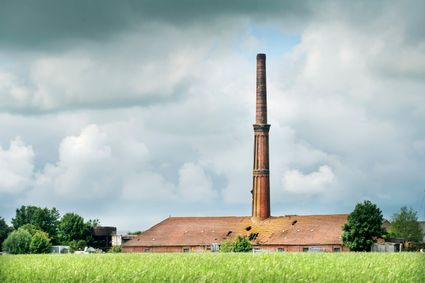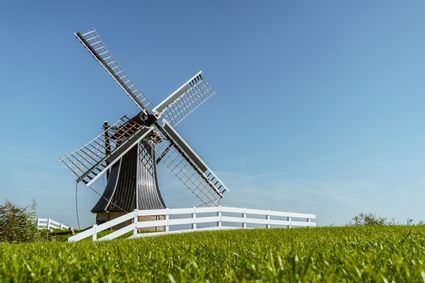ARCHAEOLOGICAL WADDEN REGION — FRIESLAND — PART 2
Part 2 of the archaeological route starts and ends in Firdgum, a very small village located on four terps (man-made dwelling mounds). See a turf house at the Yeb Hettinga Museum and experience how the residents lived before there were seawalls. Farms like this were located on small terps that often grew into villages. Good examples of this are Marrum and, in particular, Ferwert which you will encounter further on.
The terp highlight that is Hegebeintum comes after this. A visitor centre shows how people fought against and worked with the sea for centuries. Life was good on terps, surrounded by fertile ground and staying dry and out of reach of the sometimes advancing sea.
Before you get that far, you…
Part 2 of the archaeological route starts and ends in Firdgum, a very small village located on four terps (man-made dwelling mounds). See a turf house at the Yeb Hettinga Museum and experience how the residents lived before there were seawalls. Farms like this were located on small terps that often grew into villages. Good examples of this are Marrum and, in particular, Ferwert which you will encounter further on.
The terp highlight that is Hegebeintum comes after this. A visitor centre shows how people fought against and worked with the sea for centuries. Life was good on terps, surrounded by fertile ground and staying dry and out of reach of the sometimes advancing sea.
Before you get that far, you first cycle from Firdgum through Het Bildt. Flat country. No terps. This is where the Middelzee emptied into the Wadden Sea, but it eventually silted up. The surrounding terp countryside was protected by dikes in the meantime. In 1500, this also became good agricultural land due to the reclamation of Het Bildt.
Sint Jacobiparochie and Sint Annaparochie were villages for the mud flat and dike workers, who constructed the Oudebiltdijk. The small houses show that the work was not high-paying. You cycle over the dike to the picturesque Oudebildtzijl, where one of the two locks were created in the dike. This was followed a hundred years later by the Nieuwebiltijk and finally the current seawall. Visit the Archaeological Support Point in the Aerden Plaats visitor centre in Oudebildtzijl to learn more about it.
The new De Heining pumping station makes it clear that water management is continuing to develop. This fish-friendly and safe installation ensures that fresh and salt water can make a better connection, which benefits the salt marsh plants and wading birds. You pass it twice. The salt marsh outside the dikes gives an impression of what the entire Wadden coast once looked like.
On the way back you cycle along the seawall to Zwarte Haan, which also has a pumping station and the De Slikwerker sculpture. The sculpture is an ode to the men who reclaimed Het Bildt from 1505 onwards. A job that took two and a half centuries on and off. The land was reclaimed from the sea little by little. It was incredibly hard work in often difficult conditions.
Because it was lovely during the spring sunshine or on a warm summer day, but imagine it on a wet, cold autumn day - of which there were many - since the reclamation of 't Bildt coincided with the so-called Little Ice Age, when everywhere in Europe it was just a few degrees colder than it is now - with no shelter whatsoever from the bleak wind that blows mercilessly from across the Wad.
Zwarte Haan is now an example of the good life along the Wadden Sea coast, thanks to the restaurant of the same name at the bottom of the dike. It's a good idea to plan your route so that you arrive here at a good time for a Wadden gold certified lunch or dinner. It is a wonderful prelude to the last ten kilometers back to Firdgum.
Museums of Terpenland (Terpen country)
Four small archaeology museums along the Wadden coast are working together under the name Terpenland. Three are located along this route: in Firdgum, Oude Bildtzijl and Hegebeintum. Want to visit the fourth? It’s in Wijnaldum, on the Archaeological route Wadden coast Friesland part 1.
Dutch Delta Design
Want to know more about the water management for which the Netherlands is particularly well-known around the world? Read the full story about the water heritage along the Wadden coast.
Sights on this route
Starting point
Camstrawei 21 18
8852 RH Firdgum
Navigate to starting point
TOP Firdgum/Koehool
Vanaf Toeristisch Overstap Punt Firdgum/Koehool kun je zo het gebied rondom Unesco Werelderfgoed De Wadden intrekken!
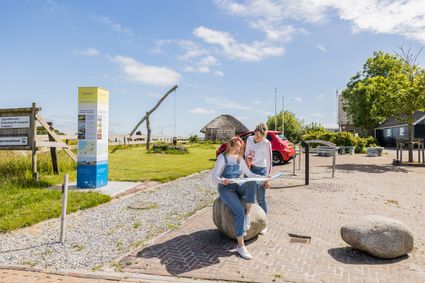
Bezoekerscentrum Aerden Plaats
Visit the "Earthy Place" and discover both the cultural history and contemporary art of the Bildt. The Archaeological Centre shows the history of this area and specific facts of the Bildtse culture.
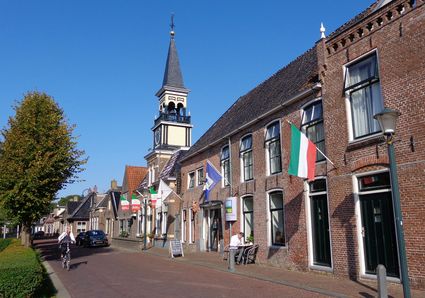
Bezoekerscentrum Aerden Plaats
Bezoekerscentrum Aerden Plaats
Ds. Schuilingstraat 4- 6
9078WD Oudebildtzijl
TOP Oudebildtzijl
Vanaf Toeristisch Overstappunt Oudebildtzijl kan je 't Bildtse land, de Waddenkust en de akkerlanden verkennen.

VIJFHUIZEN AIRMAIL
In the autumn of 1940 a watchtower was built at the Vijfhuizen on the seawall to watch out for enemy planes. The sentries stayed in a barrack that stood on the land of P. Porte.
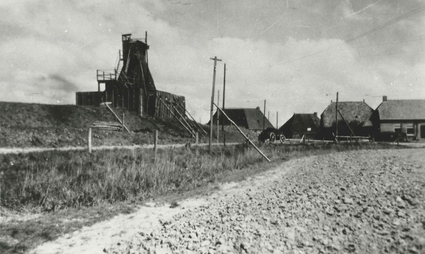
Dijktempel (dike temple) at Marrum
This spectacular work of art by Ids Willemsma is a great place to land. It is described as a ‘Dike Temple’. But what is it really?
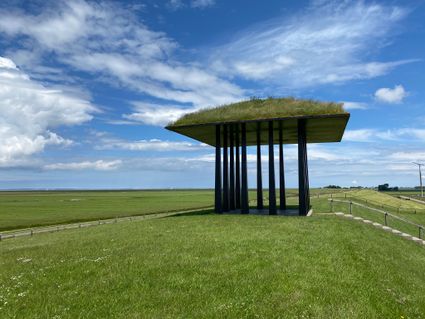
Dijktempel (dike temple) at Marrum
Dijktempel (dike temple) at Marrum
Op de Zeedijk bij splitsing 'Zeedijk' en 'Ozingaloane'
Ozingaloane 1
9073 TP Marrum
Visitor's Center 'Terp Hegebeintum'
Hegebeintum, a small village in North East Friesland, known for its high mound. Activities around and in the village are announced here.
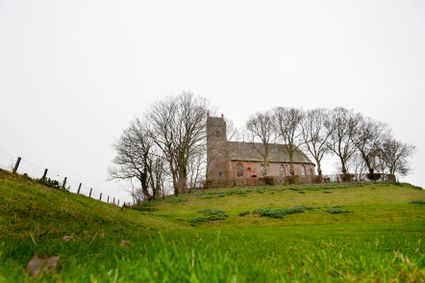
Visitor's Center 'Terp Hegebeintum'
Visitor's Center 'Terp Hegebeintum'
Kennis- en Ynformaasjesintrum Terp Hegebeintum
Pypkedyk 4
9173 GC Hegebeintum
DOBBEPAARDEN PHOTO ARTWORK
Discover the reclining photo artwork in the middle of the Ozingadobbe, the place where the horses got trapped in 2006.
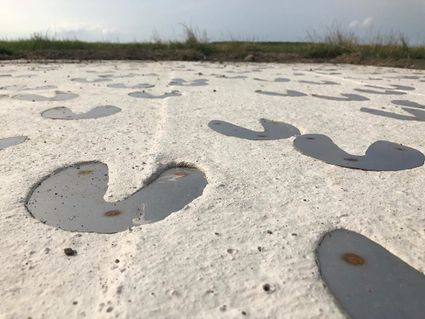
It Noarderleech - Noard Fryslan Butendyks
Want to get a breath of fresh air on these salt marshes outside the dikes? This area is a very popular attraction for birds, a sloppy million of them pay a short or longer visit every year. It's rough, wide and often you're the only one of your kind here!

It Noarderleech - Noard Fryslan Butendyks
It Noarderleech - Noard Fryslan Butendyks
Noorderleeg 5A
9074TG Hallum
Yeb Hettinga Museum
The first attempt to build a replica of a traditional terp dwelling failed when excessive rainfall caused it to collapse. But the second attempt succeeded. It may be a turf dwelling but it stands as strong as bricks and mortar.
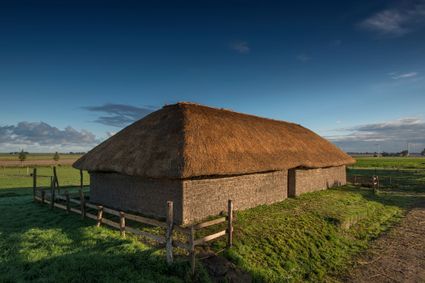
TOP Firdgum/Koehool
Vanaf Toeristisch Overstap Punt Firdgum/Koehool kun je zo het gebied rondom Unesco Werelderfgoed De Wadden intrekken!

Directions
Firdgum church tower
An eye-catching sight in Firdgum. The reformed church fell into ruin and was demolished in 1794, but the 13th-century tower still stands proudly. There is a path around the tower. It’s worth getting off your bike and taking a walk around it. It offers a beautiful view of the landscape in which you can recognize the former terps.
Sint Jacobiparochie and Sint Annaparochie
Sint Jacobiparochie and Sint Annaparochie, among others, were built for the dike and mudflat workers from South Holland. They continued to live there even after the work was done, which is why Bildts, a Dutch-Frisian hybrid, is spoken here and not Frisian.
Oudebiltdijk
Hard-working men built the Oudebildtdijk in 1505. They reclaimed the Middelzee estuary and turned it into agricultural land: Het Bildt.
Oudebildtzijl
The Oudebiltdijk was equipped with two locks. One is still there, in the eponymous village of Oudebildtzijl.
Archaeological Support Point in the Aerden Plaats visitor center
The Archaeological Support Point explains the history of Het Bildt, the specific Bildt culture, and the dikes.
Dike Temple
A piece of the raised seawall. The artwork is called 'the temple of Ids', after its maker Ids Wiersma.
Lytse Teetún
Want to refill your water bottle or enjoy a coffee or tea with cake? It's all possible in the Lytse Teetún. A cozy tea garden in the beautiful terp village of Ferwert.
Visitor centre Terp Hegebeintum
Take a break from the route and stop by the new visitor center at the foot of the Hegebeintum terp. This tells the story of the origin of the special terp countryside and shows what a terp is made up of. Don’t skip the church on top of the terp when you visit. It is one of the finest examples of the characteristic Romanesque 'terp churches'.
De Heining
The largest fish-friendly screw pump in the Netherlands. De Heining discharges water into the Waddenzee via a newly dug channel through the It Noarderleech area outside the dikes. Migratory fish are given plenty of time on both sides of the dike. They even have their own stairs. There is room for visitors to see everything.
Yeb Hettinga Museum
The original terp house made of turf stands solid. At the Yeb Hettinga Museum in Firdgum. The museum itself has more information about the construction of the turf house and about the many finds made by amateur archaeologists from the area.
- 21
- 48
- 22
- 20
- 34
- 38
- 69
- 68
- 93
- 01
- 02
- 34
- 13
- 09
- 72
- 73
- 90
- 03
- 01
- 93
- 93
- 71
- 70
- 22
- 48
- 21
